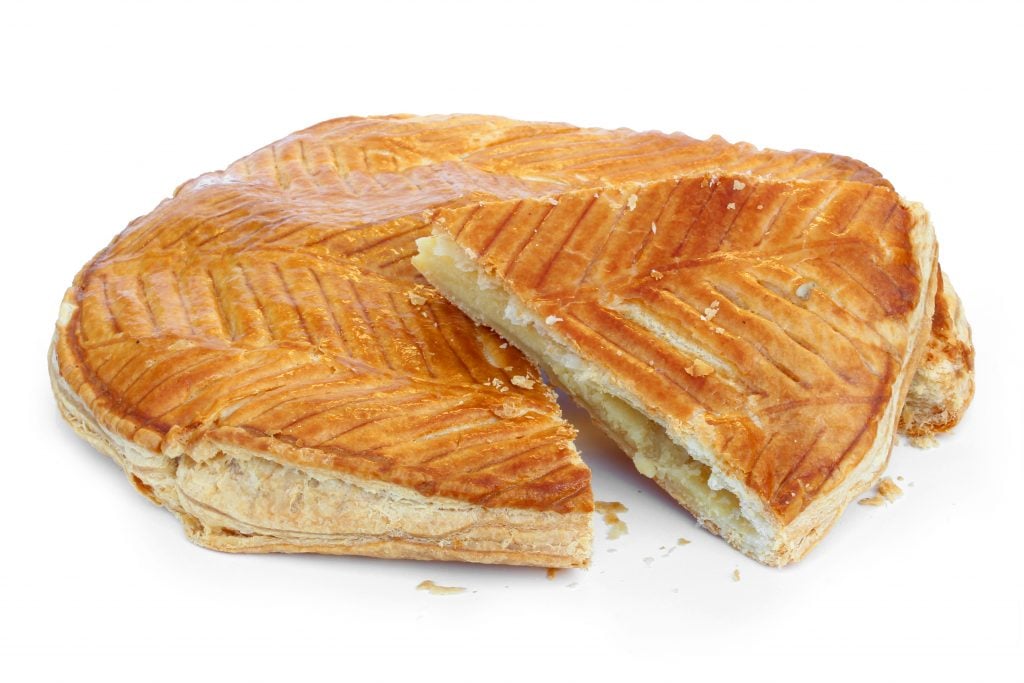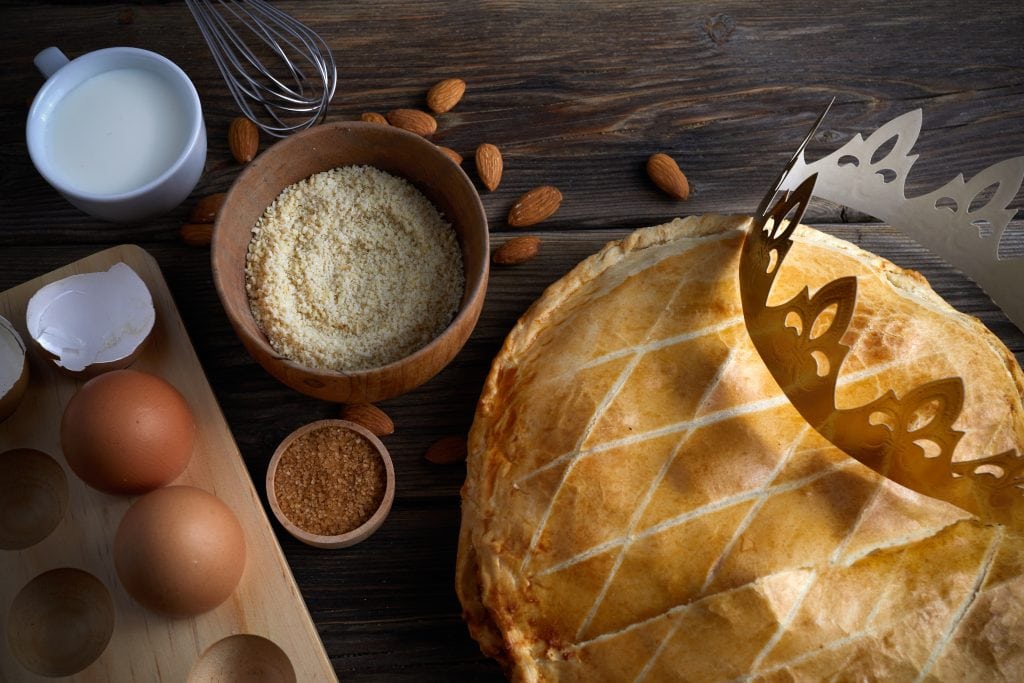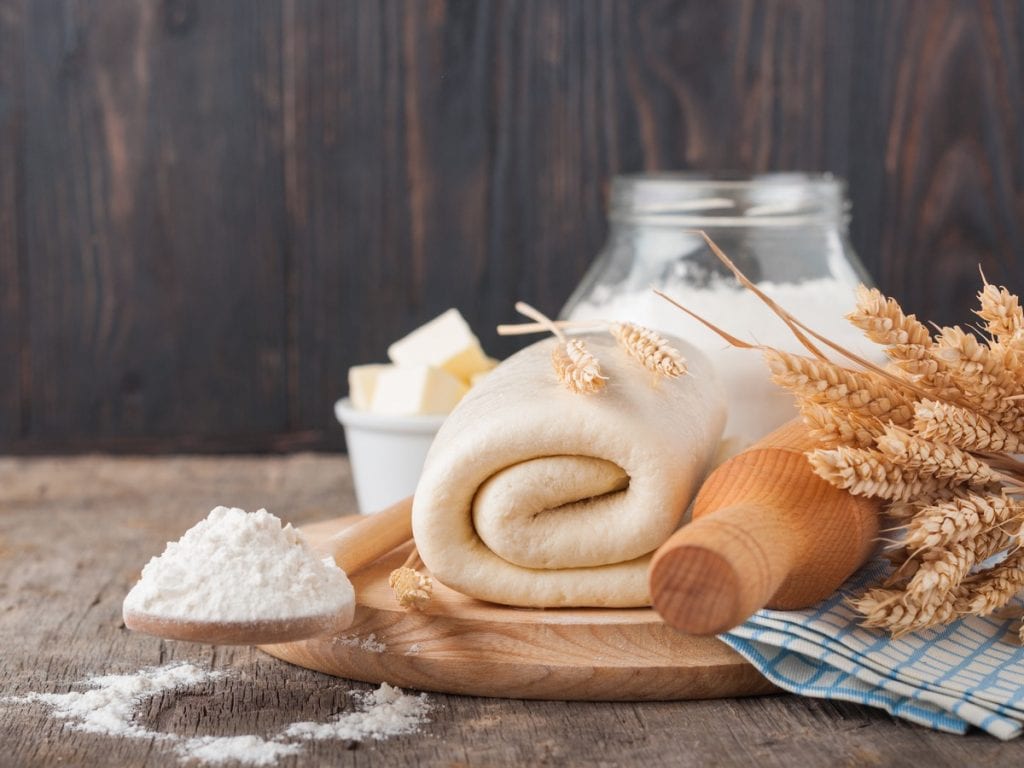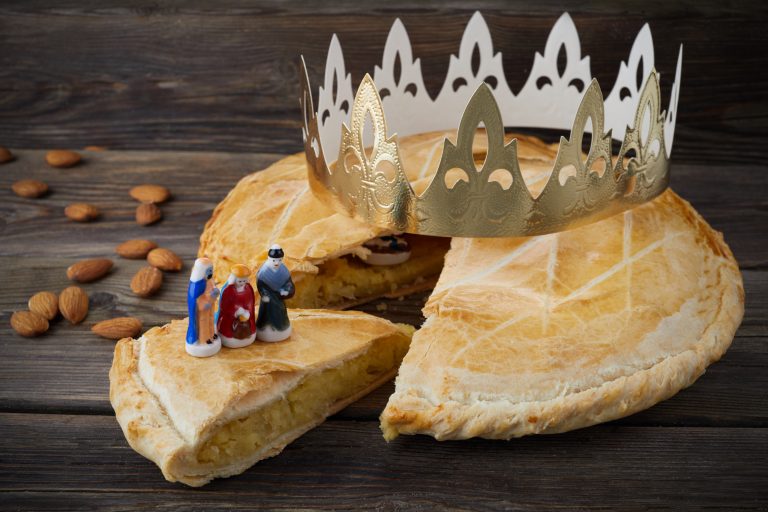What is galette de rois
A shell of puff pastry filled with frangipane cream and… a fava bean! Pleasant surprise for whoever finds it, and rightfully be the king of the day. This is how Epiphany (aka Little Christmas) is celebrated in France: the day of January 6th which, just like in Italy, marks the end of the Christmas holidays. We're ending this series on a sweet note, with a dessert of ancient origin and a long-awaited tradition by the young and old. A ritual that was already going on since the Roman Age, when a real broad bean was inserted into the dessert as a symbol of fertility and expectation of Spring, with the awakening of nature. Today a plastic one is usually used, while in Limoges in 1875 when the first galette de rois appeared it was a porcelain fava bean. Although it is almost certain that the cake was prepared even earlier, and from the 14th century the custom of sharing it at the table began to spread especially in Northern France, with lots of rules applied.

The tradition of the galette de rois
A fascinating and characteristic protocol, which the more traditionalist families continue to put into practice. The cutting, for example, must take place under the table in the dark: it will be the youngest of the house who assigns each slice to a specific guest, relying on chance and intuition. La féve (as the surprise inside is called in French) designates the king or queen of the day, who will have to wear a coloured paper crown and, in theory, will be able to "give orders" to the rest of the group throughout the day, proposing what to do to continue the festivities. After the division, the delicious galette, a hymn to sweetness and butter that characterises the fragrant pastry on the outside, is then consumed by everyone: the best pairing? Cider or champagne, naturellement!

Galette with or without king
Customs aside, the recipe is of pagan origin and was already present in Roman banquets organised in honour of the deities between the end of December and the beginning of January. After being replaced by reproductions in porcelain and later in plastic, the fava bean was often replaced completely with figures representing children, and then again toy cars, animals or other shapes designed for the little ones. Little things that are even collected by many galette fanatics: a boy named Bernard Joly apparently has more than 1,200 of these. Another curious anecdote: during the revolution, the name was changed to galettes "de la liberté" or "de l'egalité", because at that time being king was not a great fortune... They are also eaten at the Elysée, but without figurines or fava beans inside and none refer to royalist titles. Today the cakes are available in almost all the boulangeries across the country, but they can also be prepared at home: all you need is a lot of patience with the puff pastry, definitely the most difficult part of the recipe.

How to make French style puff pastry
For those wishing to dabble with the cake of kings, here is the basic recipe for puff pastry.
Ingredients
500 g good quality butter
500 g flour, plus more for the work surface
1 tsp salt
Water
Premise: to prepare the puff pastry it's necessary to work with a base dough to which a butter block is gradually incorporated through lamination (the process of folding and rolling butter into dough over and over again to create super-thin layers. These layers, which alternate between butter and dough, are what give crusts and croissants their signature honeycomb interior structure and their fabulously flaky texture).
Sift 400 g of flour on the table (preferably marble) and mix with salt. Make a well in the flour and pour about a glass of slightly warm water in the centre (the quantity cannot be specified exactly: therefore, pour a little at a time). Mix the ingredients and work the dough vigorously until smooth. The dough should be quite solid. Do not knead the dough more than necessary: when it is smooth and evenly mixed, roll it into a ball and slit a rather deep cross cut in the surface (this operation will make rolling out easier). Place in a bowl, seal with cling film and let it rest for 30 minutes.
Sift 100 g of flour on the table, spread it out and drop 500 g of butter cut into small pieces then wet your hands in iced water, dry them off and while still cold, quickly mix the butter and flour using your fingertips as much as possible so as not to heat the dough. Using two large-bladed knives or bench scrapers, shape the butter and flour mixture into a regular rectangle. If the slab is too soft, pop it for a few minutes in the refrigerator.
Lightly flour the table and roll out the base dough with a rolling pin forming a square half a centimetre thick. Place the butter block exactly in the middle of the rolled out dough and cover it first with one and then with the other excess flap. Press lightly with a rolling pin, sealing the edges well. Fold the flaps again, one above and the other below the dough. Pressing the rolling pin evenly and moving it in one direction only, roll out the dough to form a rectangle about half a centimetre thick. Fold the dough to form three layers (like folding a letter) and with a rolling pin form a rectangle about half a centimetre thick again. Repeat three more times, wrap it in cling film and let it rest in a cool place (the least cold part of the fridge is fine). After 30 minutes, give it another fold. In all you will have to give 6 folds at 30 minute intervals during which the dough needs to rest in a cool place.
by Michela Becchi


 Meloni: "Tariffs? If necessary, there will be consequences. Heavy impact on agri-food sector"
Meloni: "Tariffs? If necessary, there will be consequences. Heavy impact on agri-food sector" The Government honours the greats of Italian cuisine, from Bottura to Pepe. Massari: "Thank you, Meloni, the only one who listened to us"
The Government honours the greats of Italian cuisine, from Bottura to Pepe. Massari: "Thank you, Meloni, the only one who listened to us" "We must promote a cuisine that is not just for the few." Interview with Massimo Bottura
"We must promote a cuisine that is not just for the few." Interview with Massimo Bottura Wine was a drink of the people as early as the Early Bronze Age. A study disproves the ancient elitism of Bacchus’ nectar
Wine was a drink of the people as early as the Early Bronze Age. A study disproves the ancient elitism of Bacchus’ nectar "From 2nd April, US tariffs between 10% and 25% on wine as well." The announcement from the Wine Trade Alliance
"From 2nd April, US tariffs between 10% and 25% on wine as well." The announcement from the Wine Trade Alliance






